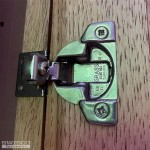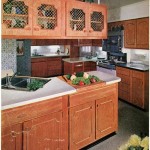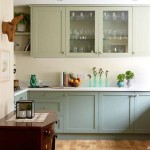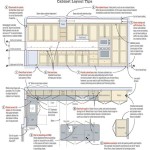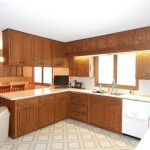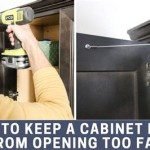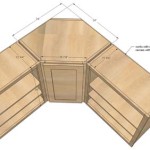```html
How Much Is A Built-In TV Cabinet?
Determining the cost of a built-in TV cabinet involves several factors that influence the final price. Unlike purchasing freestanding furniture, a built-in cabinet is a custom installation, demanding a more personalized approach to budgeting. Understanding these factors is crucial for homeowners seeking to incorporate this feature into their living space or home theater.
A built-in TV cabinet refers to a structure permanently integrated into the room's architecture, typically recessing or flanking the television screen. They are often more than a simple entertainment center, frequently including shelving, drawers, and other storage solutions designed to blend seamlessly with the existing décor. The custom nature of these installations contributes significantly to the overall cost.
Key Cost Influencers: Materials Used
The selection of materials constitutes one of the most significant cost drivers. Options range from economical choices like laminate and medium-density fiberboard (MDF) to high-end selections such as solid hardwoods (oak, maple, cherry) and exotic veneers. Each material carries a distinct price point and aesthetic appeal.
Laminate and MDF are generally the most budget-friendly. Laminate is a plastic coating applied over a substrate, offering a wide variety of colors and patterns. MDF, an engineered wood product, provides a smooth surface for painting or laminating. While durable, these materials may not offer the same level of visual richness as solid wood.
Solid hardwoods offer superior durability and aesthetic appeal. They are prized for their natural grain patterns and ability to be stained or finished in a variety of ways. However, solid hardwoods are significantly more expensive than laminate or MDF. Consider factors like wood species and grade when comparing prices. Premium hardwoods, like cherry or walnut, will command a higher price than more common options like pine.
Veneers, thin slices of real wood adhered to a substrate (often plywood or MDF), present a compromise between the cost of solid wood and the look of more affordable materials. Veneers can provide the visual appearance of expensive hardwoods without the associated price. Choosing the right veneer can significantly reduce the overall cost while still achieving a desired aesthetic.
Beyond the primary wood components, hardware choices also impact costs. High-end drawer pulls, hinges, and other hardware can add substantially to the final price. Consider the style and functionality of hardware in relation to the overall design of the cabinet.
Design Complexity and Customization
The complexity of the design plays a pivotal role in determining the overall expenditure. Simple, rectangular cabinets with minimal detailing will typically be less expensive than intricate designs involving curves, custom molding, or specialized compartments.
Customization, a key benefit of built-in cabinets, also increases cost. Integrating specific features, such as adjustable shelving, pull-out drawers, or hidden compartments for media equipment, requires specialized construction techniques and adds to the labor required. The more bespoke the design, the higher the price will likely be.
Consider the integration of electrical components. If the cabinet requires wiring for lighting, power outlets, or cable management, this will add to the overall cost. Hiring a licensed electrician is essential to ensure safety and compliance with building codes.
The dimensions of the cabinet directly affect material usage and labor time. A larger cabinet naturally requires more materials and takes longer to construct and install. Carefully consider the size and proportions of the cabinet in relation to the surrounding room to optimize both aesthetics and budget.
The level of detail in the cabinet's finish also impacts the price. A simple painted finish will generally be less expensive than a multi-step staining and lacquering process. Consider the desired level of sheen and durability when selecting a finish.
Installation Costs and Labor
Labor constitutes a substantial portion of the overall cost. The complexity of the installation, the experience of the installer, and the geographical location all influence labor rates. Installation involves not only assembling and securing the cabinet but also potentially modifying existing walls or electrical systems.
Hiring a skilled and experienced carpenter or contractor is crucial for a successful installation. While DIY installation might seem tempting to reduce costs, it risks improper installation and potential damage to the cabinet or surrounding walls. A professional installer will have the necessary tools and expertise to ensure a precise and secure fit.
Installation costs can vary significantly depending on the specific requirements of the project. Complex installations that require significant modifications to the existing structure will naturally be more expensive. Consider factors such as the need to relocate electrical wiring, plumbing, or HVAC ducts.
Geographical location also plays a role in labor costs. Labor rates tend to be higher in urban areas and regions with a higher cost of living. Obtain multiple quotes from local contractors to get a sense of the prevailing labor rates in your area.
Permits may be required for certain installations, particularly those involving electrical work or structural modifications. Check with your local building department to determine if any permits are necessary and factor those costs into the overall budget.
Preparation of the installation site can also add to the cost. This may involve removing existing furniture, patching walls, or leveling the floor. Ensure that the installation area is properly prepared before the contractor arrives to avoid delays and additional charges.
Cleanup after the installation is typically included in the contractor's fee, but it is important to clarify this in the contract. Removing debris and ensuring that the area is left clean and tidy is an important aspect of the overall project.
The final cost of a built-in TV cabinet can range widely, from a few thousand dollars for a simple, budget-friendly design to tens of thousands of dollars for a highly customized, high-end installation. Obtaining detailed quotes from multiple contractors and carefully considering the factors outlined above will help homeowners create a realistic budget and achieve their desired aesthetic.
It is advisable to request a detailed breakdown of costs from each contractor, outlining the specific charges for materials, labor, and any other associated expenses. This will allow for a more accurate comparison of quotes and help avoid any surprises later on in the project.
Ultimately, the cost of a built-in TV cabinet is an investment in both functionality and aesthetics. By carefully considering the various cost factors and working with experienced professionals, homeowners can create a custom entertainment center that enhances their living space and provides years of enjoyment.
```
Tv Unit Design Services Dimension Size 10 X7 At 100 Sq Ft In Ghaziabad

Built In Tv Cupboard New Arrivals

Custom Built Tv Unit At 450 Square Feet Panel In Lucknow Id 15991922497

Custom Entertainment Centers Built In Tv Cabinets T L King Cabinetmakers

How Do You Style A Built In Tv Cabinet Knowledge News Zhejiang Rebon Smart Home Co Ltd

Bespoke Entertainment Units New Arrivals

Floor To Ceiling Tv Built Ins Design Ideas

Customized Modern Living Room Tv Cabinet Built In Cabinets For Flat Screen

A Guide To Diffe Types Of Tv Units Designcafe

30 Ideas For Tv Units With Storage Bespoke Carpentry London
Related Posts

